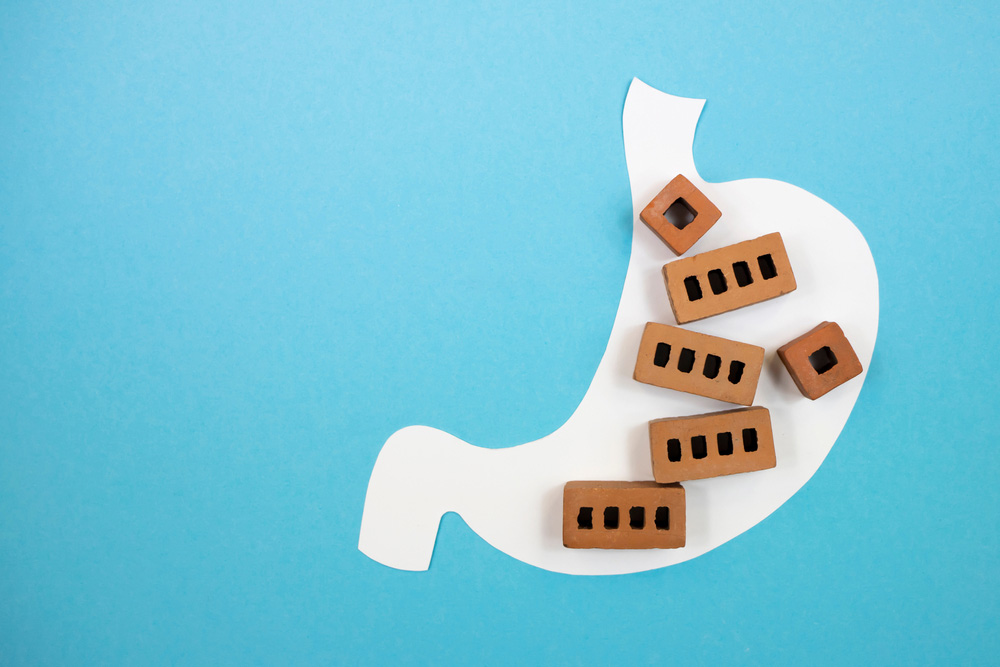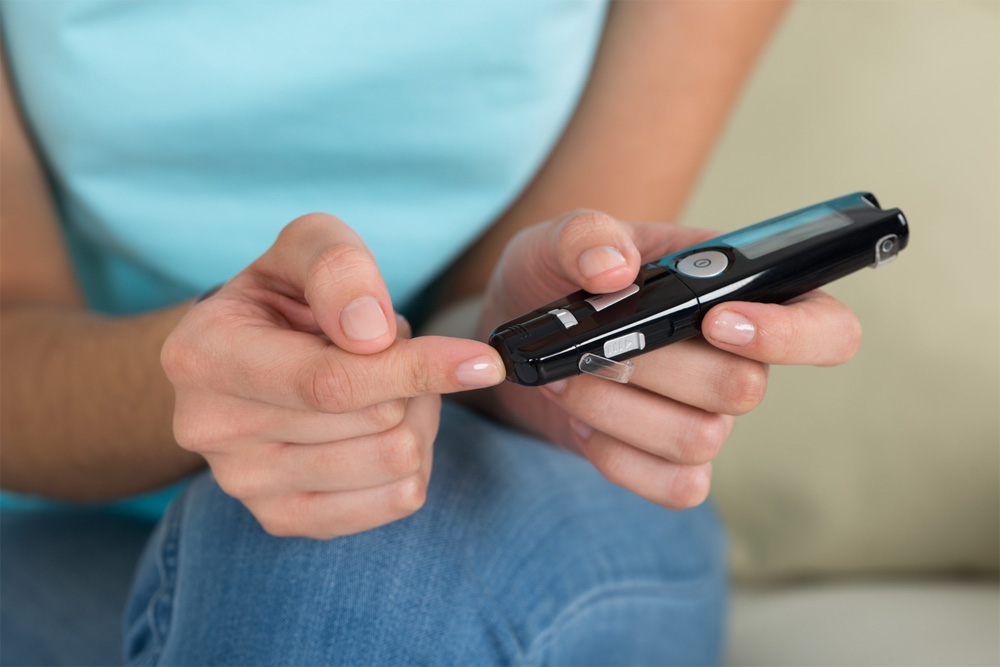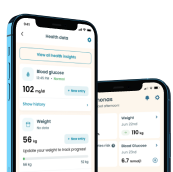Diabetes Stomach Pain: Causes, Diagnosis and Management
Abdominal pain is one of the symptoms of diabetes. Many people who suffer from high blood sugar levels also experience stomach pain related to their condition. Unfortunately, stomach pain in people with diabetes is one of the major undiagnosed complications that put their health—and sometimes, lives—at risk.

Abdominal pain is one of the symptoms of diabetes. Many people who suffer from high blood sugar levels also experience stomach pain related to their condition. Unfortunately, stomach pain in people with diabetes is one of the major undiagnosed complications that put their health—and sometimes, lives—at risk.
This guide comprehensively considers diabetes and how it causes stomach pain, the reason for the pain, the triggers, complications, and possible treatments.
What to Expect:
- Diabetes and Stomach Pain
- What Is Gastroparesis?
- Gastroparesis Risk Factors and Prevalence
- Symptoms of Gastroparesis
- Complications of Gastroparesis
- Diagnosis and Test for Gastroparesis
- Treating and Managing Gastroparesis
Diabetes and Stomach Pain

One of the significant challenges that people with diabetes face is stomach pain. People with high blood sugar are more susceptible to gastrointestinal symptoms like bowel pains and can suffer fatal complications.
Most people with the condition are mostly perplexed when they experience discomfort. Some even confuse the pain with normal aches and only visit a specialist when their condition is severe and not responsive to over-the-counter (OTC) drug products. This situation is extremely dangerous as stomach muscle pain triggered by high blood glucose levels is progressive and only worsens with time.
As a result, people with a medical history of high blood sugar levels mustn’t hesitate to see a doctor for a check-up when stomach pains remain unabated after a few hours.
One major diabetes complication that presents as stomach pain is diabetic gastroparesis. It’s a digestive condition that affects the gastrointestinal tract leading to mild to severe pain in the abdomen. In most cases, when you feel unabated progressive stomach pain and have diabetes, there’s a high chance it’s gastroparesis.
What Is Gastroparesis?

While stomach discomfort is a phenomenon almost everyone experiences, people with diabetes can experience diabetic stomach pain, which is more than common ordinary discomforts. Gastroparesis is a mild to severe diabetes stomach bloating induced by poor food movement from the stomach to the small intestine.
In some severe instances, the stomach muscles stop working, leading to an incredibly slow or no digestion process. This moves food to the small intestine almost impossible, subsequently affecting the natural process of emptying undigested remnants into the large intestine.
Gastroparesis is also called delayed gastric emptying or partial stomach paralysis because the digestive tract and stomach muscles that aid natural food movement and digestion are no longer functioning properly.
It’s important to understand that gastroparesis affects the digestive system such that the vagus nerve—which signals stomach muscles to function when there’s food content—no longer functions as it should. The damage to the vagus nerve delays stomach emptying and not a blocked small intestine.
It’s also important to mention that not everyone with high blood glucose levels or diabetes experiences gastroparesis; however, it’s not uncommon in people with diabetes. Additionally, it’s progressive and could lead to serious health complications and even death.
Gastroparesis Risk Factors and Prevalence

As already stated, gastroparesis isn’t an uncommon condition. Unfortunately, it’s among the less talked about conditions alongside diabetes that influence poor sexual health performance in men and women.
Globally, about 20–50% of people with diabetes experience the condition, making it one of the top complications endocrinologists and health specialists try to control. The condition has been more common in people with type 1 diabetes mellitus and those struggling with type 2 diabetes for over a decade.
Another factor believed to increase the risk of the condition in those with diabetes is retinopathy — damage to blood vessels of the eye’s retina. People with nephropathy or neuropathy are also at a high risk of developing gastroparesis. Diabetic autonomic neuropathy is nerve damage caused by high blood sugar level diabetes and is the primary type that triggers gastroparesis.
Women with diabetes are considered the most susceptible to gastroparesis. Women who smoke and those that have had abdominal surgeries also have a high chance of developing gastroparesis. Coupled with high blood sugar levels, the latter have an increased risk of their stomach emptying food into the small intestine.
However, it’s important to note that while diabetes causes vagus nerve damage, it’s not the only condition that leads to it. Other risk factors and diseases that could also be responsible for the condition include:
- Viral infections
- Acid reflux disease
- Smooth muscle disorders
Therefore, even if you have diabetes, you must speak to your doctor to determine if it’s the cause of the pain and whether the pain is gastroparesis. The condition is so delicate that self-medication will barely be effective.
Symptoms of Gastroparesis

Gastroparesis has many symptoms that people with diabetes can consider to know if their condition is responsible for the sudden steady increasing pain in their stomach or not. The symptoms may be mild or extremely severe; the pain severity would depend on the extent of damage to the vagus nerve.
The vagus nerve is a long cranial nerve connected to the brain and extends down to the abdominal organs and digestive tracts. High blood glucose levels damage this organ, triggering specific digestive symptoms.
The unique thing about gastroparesis is its symptoms can flare up without any preceding warnings. The most common cause of symptoms being evident is consuming foods high in fiber. Since some people with diabetes depend on fiber and good fats as an alternative to bad carbs, the risk of manifesting symptoms is higher.
The symptoms of gastroparesis include the following:
- Feeling full immediately at the start of a meal
- Feeling full long after eating your meal
- Nausea
- Vomiting undigested food
- Bloating
- Pain in the upper stomach
- Belching
- Heartburn
- Poor or total loss of appetite
- Weight loss
- Stomach spasms
- Acid reflux
Several diseases can lead to gastroparesis and are as follows:
- Parkinson’s disease
- Chronic pancreatitis/acute pancreatitis
- Cystic fibrosis
- Kidney disease
- Turner syndrome
The symptoms above may occur sporadically at the early stage of the condition. However, the condition will only worsen without treatments and management, and the symptoms will become more apparent.
The issue with gastroparesis is that it’s not easy to diagnose; even when a doctor performs a regular diabetes scan on a person with this condition, it’s easy to miss it. As such, many people who have gastroparesis are left undiagnosed. To know if you’re at a high risk of developing the condition, you must suffer from consistent uncontrolled blood sugar levels that often last hours.
This prolonged high blood sugar often leads to extensive blood vessel damage. This subsequently affects the supply of oxygen and nitrogen, and it’s this obstruction that causes vagus nerve damage.
Complications of Gastroparesis

The primary reason gastroparesis is a concern is rooted in the complications that it can cause. In its early stages, it may only show some temporary symptoms. However, as it progresses, symptoms become much more persistent and constant and often lead to complications that could be severe and even life-threatening.
A significant complication of gastroparesis is that it is incredibly difficult for blood sugar to remain stable. Studies on gastroparesis indicate that while it holds food in the stomach in most cases, it also passes food extremely quickly in rare cases. The effect of these two phenomena is low blood sugar (due to delayed digestion) and high blood sugar (following hasty digestion).



People who experience the two phenomena often find it challenging to know the right time to administer insulin or the one that would be best for the severity of their blood sugar. The uncertainty in how gastroparesis causes blood sugar fluctuations makes it easy for the body to develop other related complications, as outlined below:
Complications for a sudden and consistently high blood sugar rise include:
- Kidney damage
- Eye damage, including cataracts and retinopathy
- Heart disease
- Foot complications that risk amputation
- Neuropathy
- Diabetic ketoacidosis
Complications for sudden and consistent low blood sugar levels include:
- Seizures
- Shakiness
- Regular loss of consciousness
- Diabetic coma from shock
Other complications that gastroparesis could cause include:
- Bacterial infections
- Electrolyte imbalance
- Malnutrition
- Indigestible masses of foods known as bezoars and can lead to stomach obstruction
- Esophagus inflammation that makes it painful and uncomfortable to swallow meals
- Tears and injuries in the esophagus due to chronic vomiting
Diagnosis and Test for Gastroparesis

Source: Verywell Health
You’ll need to consult a physician on diabetic stomach pain to diagnose gastroparesis. They’d talk to you about the symptoms and medical history and perform a one-on-one examination on you. After that, they’d conduct a series of medical tests.
During the examination, they’ll check your blood pressure for unusual changes. Other signs they’ll check for include dehydration, pain, unusual sounds, abdomen tenderness, and malnutrition.
Several types of diagnosis and tests can help ascertain gastroparesis, as outlined below:
Imaging Test
Upper gastrointestinal endoscopy or abdominal ultrasound can help diagnose and test for gastroparesis. The GI endoscopy is a thin tube that has a camera. The tube is inserted through the mouth and is passed to the stomach and intestine. It helps to view if there’s any blockage or obstruction in the GI tracts.
The abdominal ultrasound is another kind of imaging test. The procedure involves the use of sound waves to produce images. This wave provides a valuable image of the GI tract to check for any form of obstruction.
Laboratory Test
Another way to test for this issue is by conducting lab tests that provide essential information regarding the GI system. Performing blood tests in the lab can show if the blood glucose is high or low. The laboratory blood test further helps to provide essential information; it can help show signs of inflammation, dehydration, infection, and malnutrition.
Another lab test that can also diagnose GI complications is a urine test. It also indicates signs of dehydration.
Barium Beefsteak Meal Test
This procedure involves a person ingesting food with barium content. The person is further made to undergo imaging tests while digestion of the meal occurs. The physician will note the time it takes for the barium to leave the system.
Gastric Manometry
This test helps show the activities of the stomach muscles. In a gastric manometry procedure, the physician inserts a narrow tube through the person’s throat to his stomach. The tube helps to measure the activity of the muscles in the stomach as digestion of the food takes place. The measurement of this activity helps ascertain the stomach’s normal functioning.
Barium X-Ray
The physician can start a diagnosis for gastroparesis using the barium X-ray. The barium attaches to the stomach and makes it visible to the X-ray machine. During a barium X-ray, the person undergoes a 12-hour fast, drinks a barium-containing liquid, and then undergoes an abdomen X-ray.
The fast is necessary to check for an empty stomach after 12 hours, which is typical in normal circumstances. The case is different for people with gastroparesis.
Stomach Emptying Tests
Stomach emptying tests include several tests. These tests show the time it takes for your stomach to empty its contents, and they have the following:
Wireless Motility Capsule (SmartPill™)
This is a small device that’s swallowed. The device helps to record and transmit signals as it passes through the digestive tracts, after which it’s expelled following a bowel movement. The physician uses this information to know how long it takes for food to leave the tracts.
Gastric Emptying Scan
During this test procedure, a person consumes a bland meal with a small amount of radioactive material. The camera outside the body pictures and notes the time it takes for the radioactive material to leave the stomach.
Gastric Emptying Breath Test
During this test, you consume a meal absorbed by the intestine and changes your breath. After ingestion, samples of the breath are taken for four hours. This helps to show how long it takes the substance to move from the stomach to the intestine.
Treating and Managing Gastroparesis

There’s no cure for gastroparesis; the most effective solution is managing blood sugar and treating its symptoms. Since it’s triggered by high blood sugar, consistently stabilizing your blood sugar will reduce its symptoms and presence.
The best time to manage gastroparesis is in the earliest stage, and regular diabetes management control tips would work effectively. However, if it has already progressed, you’ll need assistance from your doctor to treat its symptoms. Below are the three main ways of treating the condition:
Use Target Insulin
Insulin is still the best means of controlling this condition. Using a mix of basal and bolus insulin can help you control gastroparesis. In most cases, you’ll need the assistance of your doctor as it’s pretty confusing to know how to best handle gastroparesis in its different stages. However, you must follow a strict regimen for positive results.
Go for Water Instead of Sugary Beverages
Drinking water as your primary beverage will help you avoid sugary drinks, which increase complications of gastroparesis. On the one hand, sweetened fruit juice and sugary sodas have increased the risk of type 2 diabetes in adults. On the other hand, increased water intake results in better insulin response and blood sugar control.
Reports suggest that taking an extra half serving of sugary drinks can increase the risk of type 2 diabetes by 18%, translating into an increased risk of gastroparesis. On the flip side, 24-week research of overweight adult women shows that using water to replace diet soda in a weight loss program will help reduce your insulin resistance.
Summarily, drinking water helps eliminate excess blood sugar otherwise triggered by sugary beverages.
Gastric Electrical Stimulation (GES)
Gastric electrical stimulation (GES) is a treatment option often adopted to handle the symptoms of gastroparesis in its severe stage. The GES is a procedure that comprises a surgical device inserted into the patient’s stomach. The device passes electrical pulses into the stomach muscles and the vagus nerve to push food into the small intestine, resulting in reduced vomiting, a healthy esophagus, and controlled blood sugar.
Conclusion

Managing gastroparesis is much easier at its earliest stages, and everything outlined in this guide supports that. The condition may become untreatable in its advanced stages and only get worse. Generally, diabetes health tips can help manage the condition, and the food choices of people with diabetes are a major determinant of high blood sugar (the number 1 risk factor of this condition).
For people who’ve performed blood tests for their sugar level and suspect they’re at risk of gastroparesis, adopting insulin and a healthy diabetes-friendly diet are the best management options. While your doctor should recommend the insulin choice, you can use a diabetes management app to manage and plan your diet.
Our Klinio app is one of the most trustworthy diabetes management apps you could go for to manage your condition. It’s regularly updated with the healthiest diabetes-friendly meals and can help you set a diet plan to live on.
Take a quiz and get your diabetes-management plan today!









